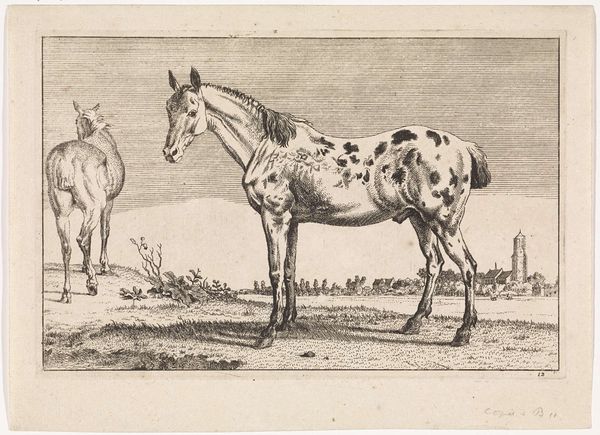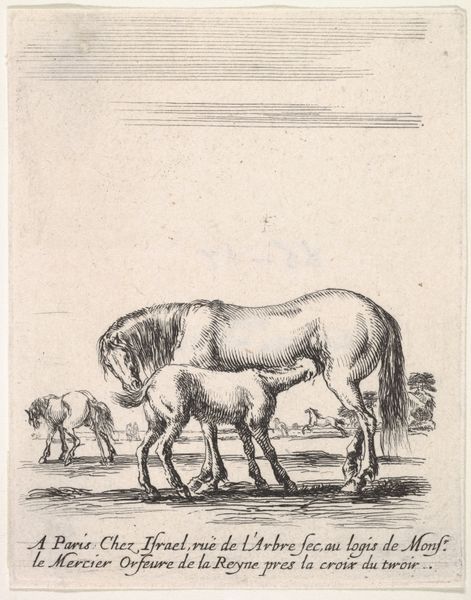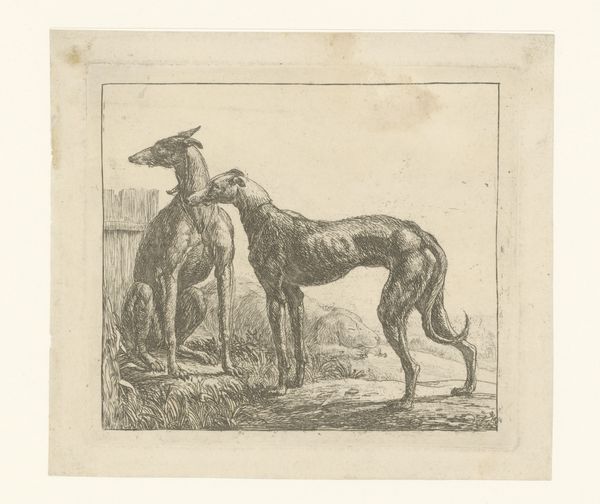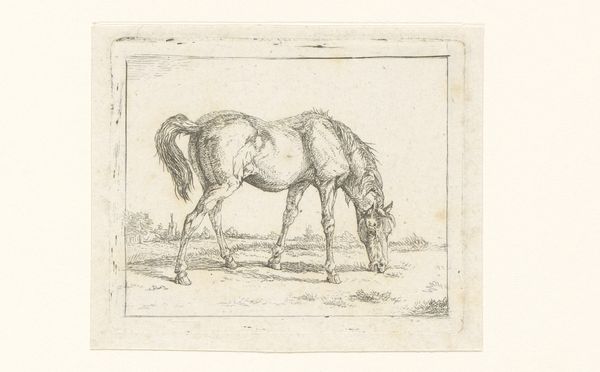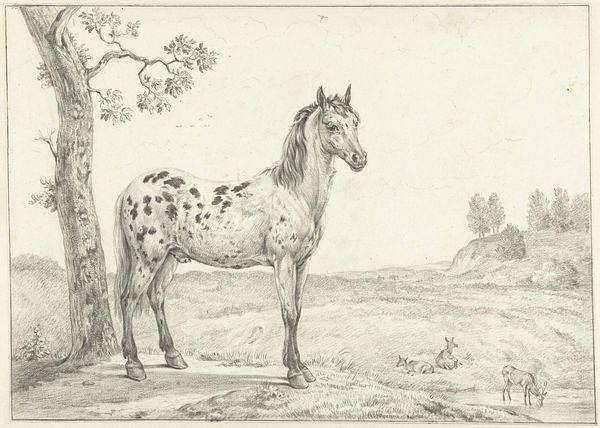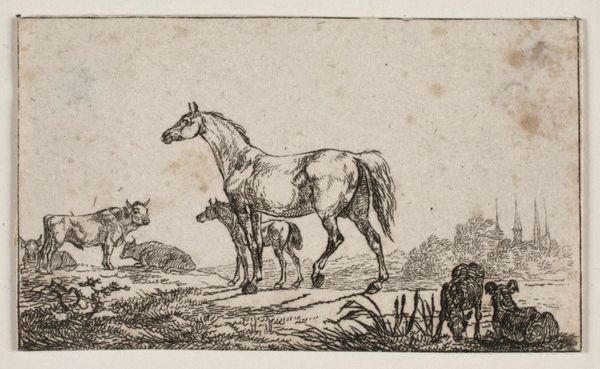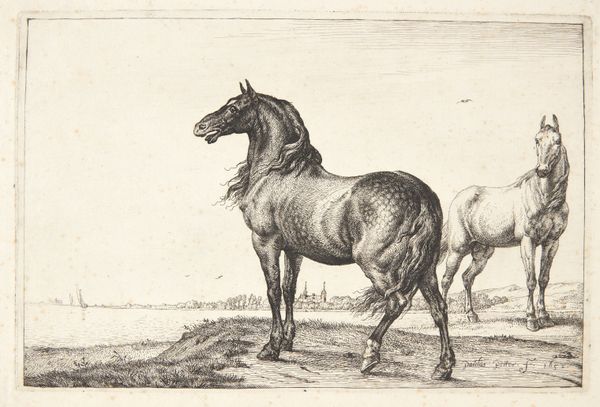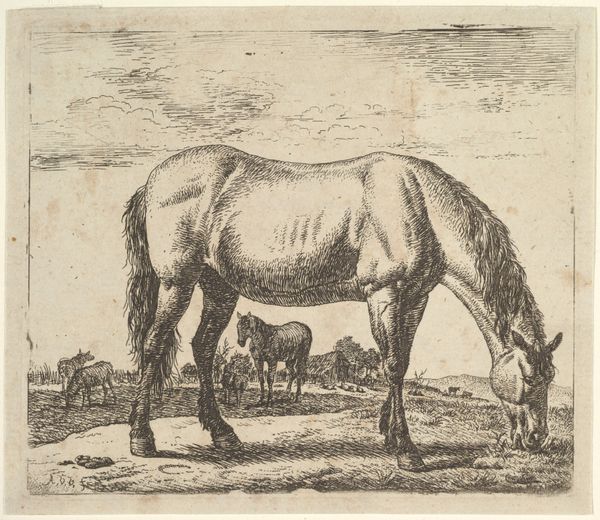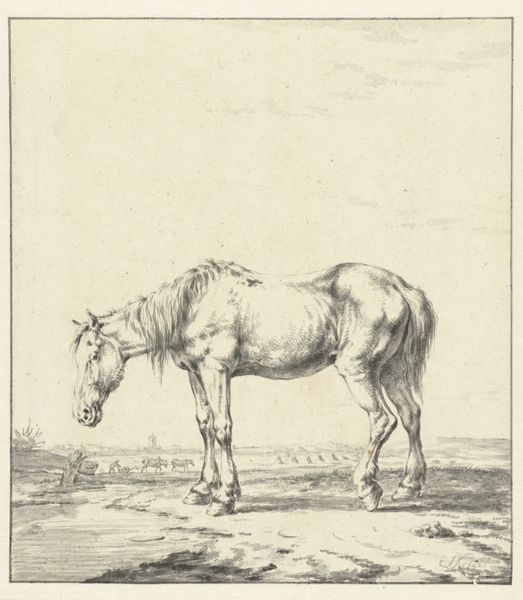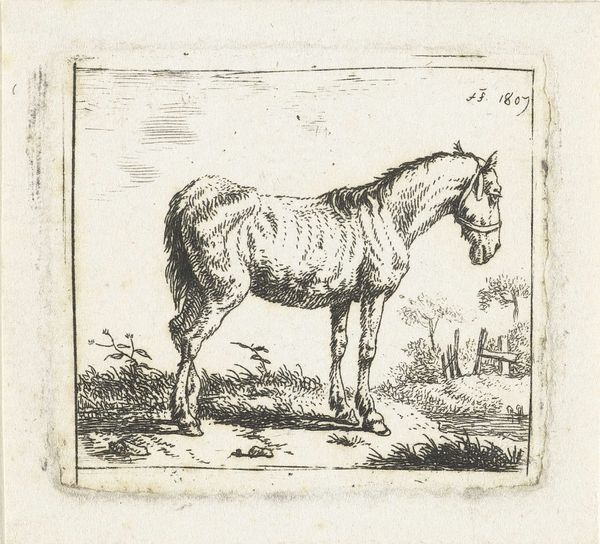
Dimensions: height 152 mm, width 190 mm
Copyright: Rijks Museum: Open Domain
Curator: This etching from the 18th century by Georg Adam titled "Paard"—which simply translates to "Horse" in Dutch—presents two equine figures in a sparse landscape. What’s your first impression? Editor: The composition feels so restrained. The delicate linework and the limited tonal range lend it a certain air of academic precision, a feeling almost pedagogical, as if presenting specimens for study. Curator: Indeed. The Baroque style is evident, albeit subdued, and the influence of Academic art is strong. I see the horse, a symbol of power and nobility for centuries, rendered here with a distinct naturalism. What might the symbolism suggest to viewers of that era? Editor: Perhaps, beyond mere representation, the artist is participating in, and reinforcing, existing hierarchies and power structures. The horse, frequently associated with wealth and aristocracy, takes on a symbolic weight that is difficult to ignore. I am thinking, who gets to possess these animals? Who commissions such works? Curator: I see your point. Consider, too, how images of animals were often laden with allegorical meanings, sometimes tied to morality or status. The careful rendering, down to the individual spots on the front horse, underscores the importance of detailed observation and scientific categorization emerging in the period. Editor: That brings to mind the burgeoning scientific societies of the era. Depictions of nature become about more than just aesthetic appreciation; they become exercises in documentation. One is reminded, too, of the art market emerging in Northern Europe where prints and drawings became accessible for middle-class homes. This aesthetic and its public role are connected to that commercial structure. Curator: Interesting observation. To me, the positioning of the two horses also hints at a deeper narrative—a sense of continuity, of lineage. It subtly weaves a narrative thread, a feeling of legacy in a seemingly simple portrayal of the animals. Editor: Yes, but I think seeing it through the lens of the market helps contextualize why it even existed, because not everyone had access to it, nor was it intended for mass distribution necessarily, so understanding its origins within societal structures matters in interpreting that “narrative.” Curator: Well, on this point of access to narratives, the print certainly allows for distribution and opens the narrative of equine grace to those removed from courtly life. Thank you for these thoughts. Editor: And thank you for yours; I certainly came around to the importance of animal depiction for continuity between cultural moments by reflecting on this today.
Comments
No comments
Be the first to comment and join the conversation on the ultimate creative platform.

